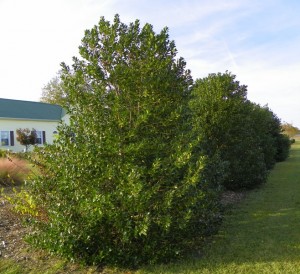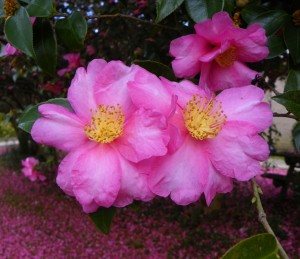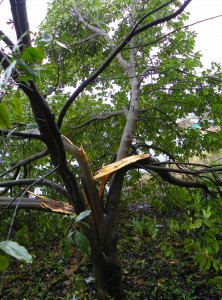What Is the Best Evergreen for Screening?
go.ncsu.edu/readext?432801
en Español / em Português
El inglés es el idioma de control de esta página. En la medida en que haya algún conflicto entre la traducción al inglés y la traducción, el inglés prevalece.
Al hacer clic en el enlace de traducción se activa un servicio de traducción gratuito para convertir la página al español. Al igual que con cualquier traducción por Internet, la conversión no es sensible al contexto y puede que no traduzca el texto en su significado original. NC State Extension no garantiza la exactitud del texto traducido. Por favor, tenga en cuenta que algunas aplicaciones y/o servicios pueden no funcionar como se espera cuando se traducen.
Português
Inglês é o idioma de controle desta página. Na medida que haja algum conflito entre o texto original em Inglês e a tradução, o Inglês prevalece.
Ao clicar no link de tradução, um serviço gratuito de tradução será ativado para converter a página para o Português. Como em qualquer tradução pela internet, a conversão não é sensivel ao contexto e pode não ocorrer a tradução para o significado orginal. O serviço de Extensão da Carolina do Norte (NC State Extension) não garante a exatidão do texto traduzido. Por favor, observe que algumas funções ou serviços podem não funcionar como esperado após a tradução.
English
English is the controlling language of this page. To the extent there is any conflict between the English text and the translation, English controls.
Clicking on the translation link activates a free translation service to convert the page to Spanish. As with any Internet translation, the conversion is not context-sensitive and may not translate the text to its original meaning. NC State Extension does not guarantee the accuracy of the translated text. Please note that some applications and/or services may not function as expected when translated.
Collapse ▲
‘Nellie Stevens’ is a popular holly variety for screens and hedging.
Evergreen shrubs make a great living fence, but look beyond the common, disease-plagued Leyland cypress. Local garden centers carry many different evergreens suitable for screening and fall and winter are the perfect time to plant them.
Hollies Are Great!
In the southeast, hollies are my favorite for a long lived, attractive, low maintenance screen. Several varieties are available that work well as hedges because of their upright growth habit. The varieties ‘Nellie Stevens’, ‘Oakleaf’, and ‘Emily Bruner’ all produce dense, dark green foliage year round and red berries in that persist through fall and winter.
Each of these varieties grows at a moderate rate to 15’ to 20’ tall and 8’ to 10’ wide. Hollies grow best in sites with sun to part shade and well drained soil, and are drought tolerant once established. Deer may browse the tips of holly branches but are unlikely to cause severe damage to these spiny-leaved plants.
Upright Shrubs for Narrow Spaces
Upright evergreens work well as screens in narrow spaces because they take up little horizontal space. Two of the narrowest evergreens available are ‘Spartan’ Juniper and ‘Emerald’ Arborvitae, both of which grow 15’ tall and only 3’-4’ wide. The main difference in these two plants is the conditions in which they prefer to grow. ‘Spartan’ Juniper is great for well drained sites because it is very drought tolerant, whereas ‘Emerald’ Arborvitae prefers moist soils. Both grow best in full sun.
If you need a columnar evergreen for a shady site, consider Japanese plum yew (Cephalotaxus harringtonia). While several low spreading selections of this shrub are available, the cultivar ‘Fastigiata’ will grow 10′-12′ tall and 6′-8′ wide. Japanese plum yew will grow in sun or shade and is rarely bothered by deer.
Another relatively narrow upright evergreen with glossy dark green leaves that is great for hedges is cleyera (Ternstroemia gymnanthera). This tough, adaptable shrub thrives in sun or shade, is drought tolerant and deer resistant, and will grow 10’-15’ tall and 6’-8’ wide.
Flowering Evergreens for Screening

Sasanqua camellias bloom in the fall.
Evergreens with showy or fragrant blooms provide a bonus feature for landscapes, providing seasonal interest as well as year round screening. Large evergreens with attractive flowers that can be used for screens include camellias and Fortune’s tea olive.
Though slow growing, camellias make spectacular hedges, especially the fall blooming Sasanqua varieties like ‘Kanjiro’ and ‘Setsugekka’, each of which will grow to 10’ tall. For best results plant camellias in moist, well drained soil in a site that receives afternoon shade.
Fortune’s tea olive is one of my favorite plants for fragrance. Clusters of small white flowers line the stems in fall, allowing their exceptional fragrance to drift through the landscape. The leaves of this dense evergreen are slightly spiny, and are rarely browsed by deer. Fortune’s tea olive is a long lived shrub that eventually reaches 15′-20′ tall and 10′-15′ wide. It’s a great choice for sunny or partly shaded areas where a large, impenetrable screen is needed.
Fast Growers for Quick Cover
Fast growers are not always the best choice. Fast growing trees and shrubs are typically weak wooded and short lived. They may provide quick cover, but then fall apart in the first hurricane or ice storm they encounter, or succumb to canker or other untreatable diseases.
For the long term, trees and shrubs with moderate or even slow growth rates are the better choice. To promote quick growth with any tree or shrub the most important things you can do are:
- Remove grass from the planting area since turf is extremely competitive with tree and shrub roots for water and nutrients.
- Water plants once a week from April through November if it does not rain – drip systems or soaker hoses work best.
- Prepare the soil well before planting. This includes incorporating compost into the soil, tilling in any lime or nutrients recommended by soil test results, and cultivating the soil to a depth of 6” to 8”. Apply a slow release or organic fertilizer in March.

Fast growing evergreens are more likely to fall apart in ice or wind storms.
If you are looking for a plant that will provide screening quickly for the short term, some fast growers are better than others for our region. One of the fastest growing evergreens for screening is ‘Green Giant’ Thuja, a variety of arborvitae that will eventually reach 40’ or more in height, and grows 15’-20’ wide. ‘Green Giant’ is great for large landscapes where a tall screen is needed, but may be too large for smaller lots. It grows best in moist but well drained soil and full sun. One disadvantage of this shrub is the lower foliage may be browsed by deer.
‘Chindo’Viburnum is another fast grower, reaching 15’-20’ in height and 8’-10’ in width within several years. This evergreen viburnum has large, shiny, dark green leaves and occasionally produces clusters of red berries in the fall. ‘Chindo’ Viburnum prefers to grow in moist, well drained soils, but has good drought tolerance once established.
For fast screening in drought prone sites, consider wax myrtle or glossy abelia. Wax myrtle is a native evergreen with olive green foliage, growing to 8’-10’ in height and width within a few years of planting. One drawback of this shrub is its tendency to break apart during heavy wind or ice, but it rapidly recovers even when large limbs break. Glossy abelia can easily reach 8’ tall by 8’ wide and grows best in sunny areas and acid soil. Its small glossy green leaves turn reddish purple in winter. Both glossy abelia and wax myrtle are rarely browsed by deer.
Learn More!
- Use NC Extension’s Plants Database to find more great plants for NC landscapes
- Consult the Extension Gardener Handbook to learn more about soils, plants, and wide range of gardening topics
- Learn how to minimize deer damage and which plants are deer resistant
Use Extension Search to find research based information from Cooperative Extension systems across the U.S.
Visit your local Cooperative Extension center to learn more about gardening and landscape care. Find your county Extension center.
Subscribe to the Chatham Gardener email list to receive timely updates on sustainable lawn, garden, and landscape care for the central NC Piedmont.




